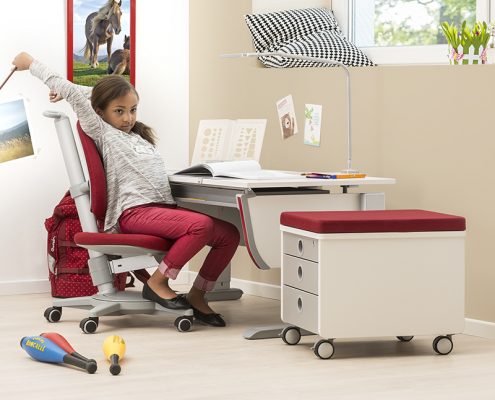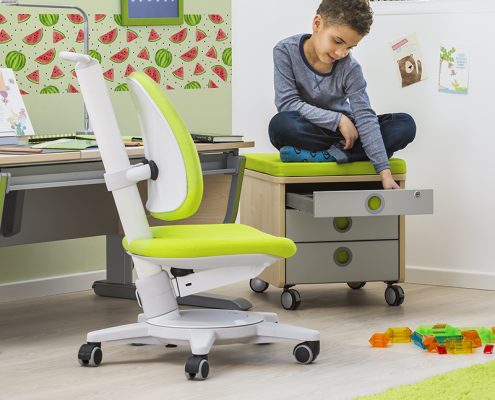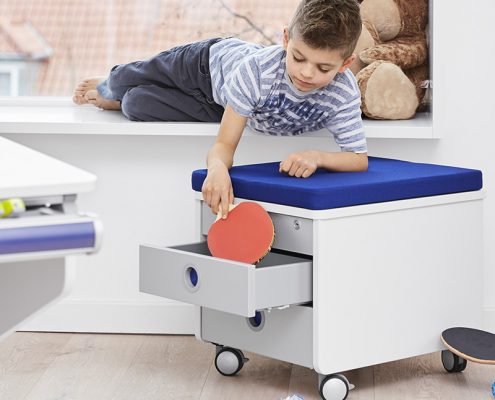kids worlds by moll
moll kids furniture grows with every challenge

For their development, children need a place that offers enough room to spread out — to move, to learn, to play. When children are still small, they like to play near their parents. They may like to stack up building blocks in the kitchen or the living room. A room divider can separate Toyland from the rest of the living area.
Once the “playground” in the living room or kitchen is no longer enough, or if school is approaching, the time is right to move into their own realm. Hamburg residential psychologist Dr. Antje Flade explains: “Once school starts, a room of their own becomes more and more important. At school age, the child’s room has several functions. It is a learning station for homework and a place where children can be with peers of their own age or just by themselves, undisturbed by grownups. A school child’s room is a multifunctional space. It is a study, play and living room at the same time.”
The learning area in a child’s room plays a central role. It changes constantly and must grow to meet a wide variety of demands — after all, “learning” is different at different ages and in different phases. Therefore, study furniture has to be flexible and change with every reorganization.
But the room size also determines the design of the learning area. For the learning area to meet the specific functionality demands and to integrate into any room, moll kids furniture is part of a modular system. Individual elements can be rearranged and extended again and again. The modules allow a completely individual learning environment to be assembled, which can be adapted at any time to current requirements — almost regardless of the room size.
Motivate the next generation with colorful design and individual furnishing solutions
Pink for girls, blue for boys. Does it have to be that way? Apart from tradition, colors chosen consciously for a child’s room can have a great effect: A well thought-out color concept can make rooms look bigger or smaller. Light colors make the room bigger and airier, while dark tones create a feeling of narrowness, but also of security. In addition, colors and especially their degree of use can affect wellbeing. If you get to know the effects of color before designing a child’s room, you can set up a cozy refuge for creative development.

How well children concentrate on learning doesn’t just depend on the color scheme, though. An area set up especially for homework is a signal and helps children focus better on their assignments. A learning area includes a desk and a chair that ideally grow with the child’s size and needs. Modular desk furniture systems, like those from moll kids, offer flexibly arrangeable solutions that meet all ergonomic requirements of a school child’s desk. They allow the desk height to be adjusted from the pedestal to deal with growth spurts. If necessary, tiltable desktops support an optimal viewing angle for all activities from reading to writing.



